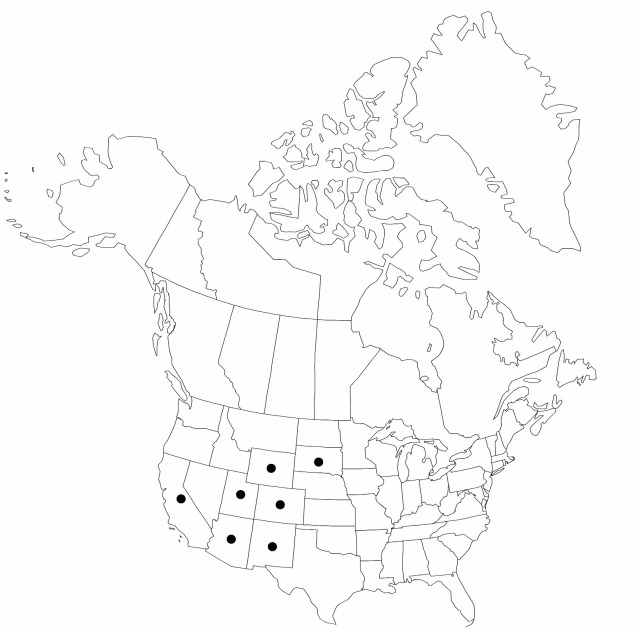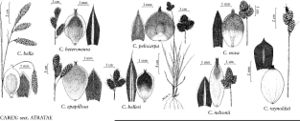Carex bella
Bot. Gaz. 17: 152. 1892.
Plants cespitose. Culms 25–55 cm, proximally scabrous. Leaves 3–6 mm wide. Inflorescences: proximal bracts shorter than or exceeding inflorescences; spikes pendent, separate, long-pendunculate, elongate, cylindric or clavate, 12–25 × 4–5.5 mm; lateral 2–3 spikes gynecandrous or, rarely, pistillate; terminal spike gynecandrous. Pistillate scales light to dark brown, margins hyaline, lanceolate, shorter than and narrower or as broad as perigynia, midvein lighter colored than body, conspicuous, frequently raised, prominent, apex acute or mucronate. Perigynia ascending, pale green or pale yellow, veinless, elliptic or obovate, 3–4 × 1.75–2 mm, apex abruptly formed, smooth; beak 0.3–0.4 mm, shallowly or deeply bidentate, smooth. Achenes nearly filling body of perigynia. 2n = 40.
Phenology: Fruiting Jun–Aug.
Habitat: Moist subalpine meadows
Elevation: 2800–3900 m
Distribution

Ariz., Calif., Colo., N.Mex., S.Dak., Utah, Wyo., Mexico (Nuevo León).
Discussion
Selected References
None.
